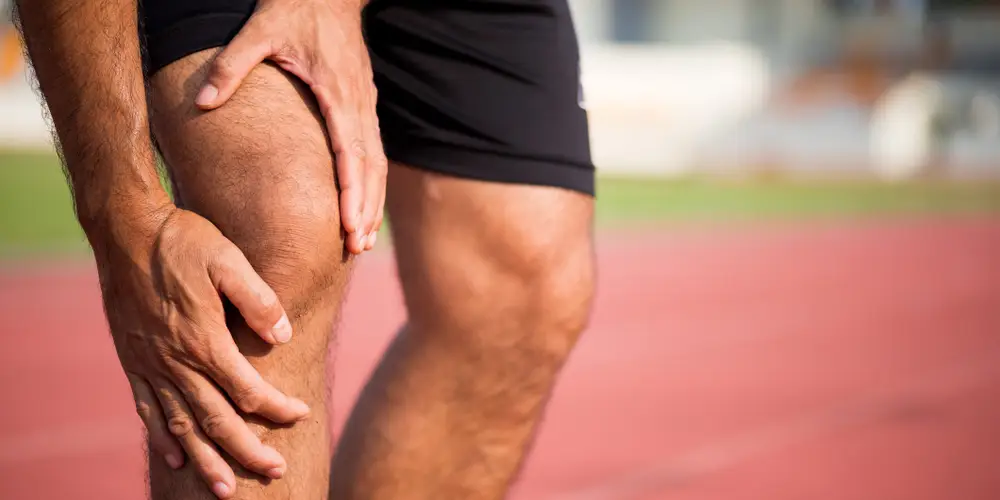Runners Knee And Other Injuries

Some runners land harder than others—even when body weight and speed (which actually has a greater effect on impact forces than body weight)—are held constant. Past research has shown that runners who land harder get injured more often, injuries such as runners knee. Two published studies provide evidence that runners can make simple changes to soften their landing when they run and thereby potentially reduce their injury risk.
Overstriding is commonly associated with excessive impact. Overstriding consists in touching the foot to the ground heel or toes first well ahead of the hips. Runners who overstride take fewer steps per minute at a given running speed than runners who do not overstride. Researchers at the University of Wisconsin investigated whether they could reduce impact forces in runners by increasing their stride rate.
The researchers measured various kinetic and kinematic variables in runners as they ran at their preferred stride rate and at stride rates 5 and 10 percent greater and less than the preferred. They found that when runners increased their stride rate by 10 percent they exhibited a significantly reduced tendency to overstride and a significant reduction in impact forces.
While training for a marathon, one of our clients, suffered the all-too-common misfortune of developing a case of patellofemoral pain syndrome (aka runners knee). But their luck took a turn for the better when she visited us.
Using frame-by-frame video analysis of the athlete’s stride, we looked for the biomechanical abnormalities that were likely causing the pain. We found that her thigh was rotating internally during ground contact due to weakness in the hips. But instead of just giving the client some strengthening exercises, as many physical therapists do, we also helped her modify her running mechanics to reduce stress on her knee.
We believe that gait retraining can drastically reduce the frequency of injuries in the running population. I believe abnormal running mechanics are a factor in most running injuries, and in most cases these flaws can be corrected.

Running in different areas and off road can really help with gait retraining
But at present, very few of the professionals who treat injured runners suggest stride alterations. This seems to be due to a lingering presumption that running gait is too “automatic” to be effectively changed.
In reality, not only is running form as changeable as a golf swing, but failure to correct form flaws in response to injuries all but guarantees that the same problem will return, or other problems will develop, after the original injury heals and the runner returns to regular training. Remember Einstein’s quote about madness: “doing the same thing over and over again and expecting different results”
Many physical therapists try to correct stride flaws indirectly by prescribing strengthening and stretching exercises designed to correct the muscular imbalances that are often linked to gait problems. These measures are “necessary, but seldom sufficient,” because stride flaws result not just from muscle imbalances but also from ingrained neuromotor patterns that are unlikely to change except through conscious practice of alternative patterns.
Here are four frequently seen stride flaws, their associated injuries, and corrective measures that we have used successfully with runners.
Stride Flaw: Thigh internally rotates during ground contact (knock knees)
Associated Injuries: Patellofemoral Pain Syndrome, Iliotibial Band Friction Syndrome
Possible Fixes: Actively engage the muscles of the buttock and the outside of the hip while your foot is in contact with the ground
Stride Flaw: Overpronation of the foot
Associated Injuries: Patellofemoral Pain Syndrome, Plantar Fasciitis, Achilles Tendinosis
Possible Fixes: Concentrate on pushing off with your big toe and on keeping your knees pointing straight ahead during ground contact
Stride Flaw: Left hip drops when right foot is on ground (and vice versa)
Associated Injuries: Patellafemoral Pain Syndrome, Iliotibial Band Friction Syndrome
Possible Fixes: Increase step width — practice running along a straight line, making sure your feet land evenly on either side of it
Stride Flaw: Overstriding (severe heel strike)
Associated Injuries: Shin splints, stress fractures, runners knee
Possible Fixes: Increase stride frequency — increase steps per minute without increasing your pace. Lean forward very slightly at the trunk. Concentrate on landing under the hips
On the bright side, it’s estimated that half of running injuries are actually re-injuries, and a single stride flaw can cause more than one type of injury, so gait retraining can still reduce your injuries by well over 50 percent. Not too shabby.
Send us a message or leave a comment and let us know if you have any questions! We all have our own thoughts on the matter, and we all have something different that suits us.
See what’s up next week for our #RunFormFriday tip! For more in depth understanding on how to put this into practise, get in touch and we’ll see how we can help!
